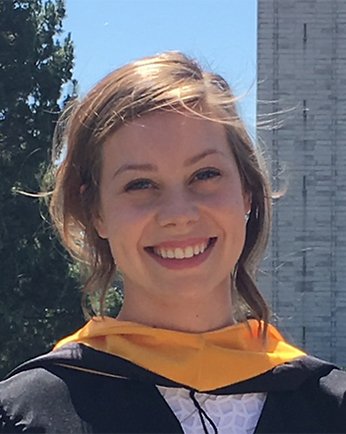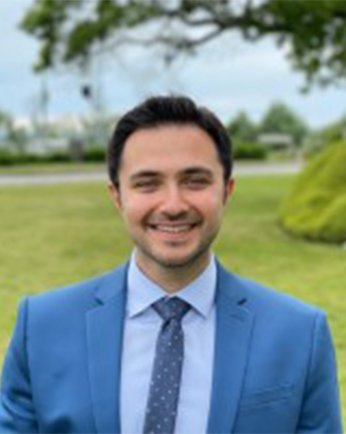Session Abstracts:

Graduate Student Researcher
University of British Columbia
Using ATC-138 to Inform Functional Recovery Design Provisions
Co-Authors: Carlos Molina Hutt (University of British Columbia), Dustin Cook (NIST), Reid Zimmerman (KPFF), Ed Almeter (HBRisk), and Curt Haselton (HBRisk)
Abstract: With the ongoing efforts by the BSSC to develop new prescriptive provisions for recovery, there is an opportunity to make use of the latest generation of functional recovery assessment tools. This presentation will cover how the ATC-138 methodology was used to inform the upcoming NEHRP recommendations for functional recovery using two criteria: probability of safety-critical structural damage and functional recovery time. We will also discuss how adjustments were made to modeling assumptions to reflect increased QAQC methods required in the new provisions. To illustrate the standardized method developed, we will present a case study of an example reinforced-concrete moment frame. Component damage is first propagated through the ATC-138 fault trees to determine the probability of safety-critical structural damage and inform drift limits and response coefficients. Next, these structural design interventions are applied with additional nonstructural component design interventions (i.e., seismic certification, nonstructural component importance factors) to assess the probability of achieving various functional recovery time targets. We also disaggregate the functional recovery time data to evaluate the probability of each component impeding function. In combination, the results are used to assess the efficacy of design drift limits, response coefficients, and nonstructural component importance factors. Ultimately, this study aims to fill a critical gap in research by outlining a methodology to codify various building systems for functional recovery.

Postdoctoral Scholar
University College London
Improving Recovery Time Consequence Models in Regional Risk Assessment by Leveraging High-fidelity Building-Specific Recovery Simulations
Co-Authors: Carlos Molina Hutt (University of British Columbia) and Carmine Galasso (University College London)
Abstract: Current regional seismic risk modeling approaches predominantly emphasize economic loss as the primary measure of earthquake impact. Integrating recovery time into these models can better support decisions toward community resilience and a shift toward more people-centered and equitable risk modeling. Nevertheless, while recent efforts have developed high-fidelity models to provide a probabilistic estimation of individual building recovery, their extension to the regional scale, as desired for community-level simulations, remains oversimplified. This study proposes a methodological approach to improve recovery time consequence models by integrating downtime fragility functions and statistical distributions developed for impeding factor delays (e.g., delays due to contractor mobilization) and repair times to provide a probabilistic estimation of post-earthquake recovery times at two distinct recovery states (i.e., shelter-in-place, and functional recovery) for building portfolios by leveraging high-fidelity, building-specific recovery simulations. The proposed methodology enables the efficient quantification of recovery times of building portfolios by leveraging simulation-based, enhanced recovery time consequence models that can be seamlessly integrated into regional risk models. The proposed consequence models are trained based on 50,000 TREADS (Tool for Recovery Estimation And Downtime Simulation) recovery simulation results of modern high-rise (8 to 24 stories) reinforced concrete shear wall buildings at five distinct hazard levels (100 to 4975 years return period) and applied, for illustrative purposes, to a portfolio of 220 buildings across Metro Vancouver, BC, under a magnitude-9 Cascadia subduction zone earthquake.

Researcher
UC Berkeley
How to create useful and usable surrogate models for earthquake engineering – status quo, limitations, and opportunities
Co-Authors: Jinyan Zhao (UC Berkeley) and Gregory Deierlein (Stanford University)
Abstract: Surrogate models are becoming increasingly important in earthquake engineering under an increasing need for uncertainty quantification, optimization, and regional simulations. To reflect on and overview the opportunities provided by and challenges faced by the surrogates, NHERI SimCenter organized a Community Roundtable Meeting titled “Surrogate Modeling of Site, Building, and Bridge System Performance in Regional Earthquake Simulations”. In this presentation, we will summarize the key findings, insights, and shared experiences from the meeting. The topics include (1) the essential features of useful and usable surrogate models identified from case-study examples; (2) best practices for developing, validating and sharing surrogate models; and (3) future opportunities, such as handling high dimensionality in inputs and outputs and various uncertainty source types.
The presentation is envisioned to prompt awareness of the merits and limitations of surrogate models and explore the opportunities for community-shared surrogates via the SimCenter software platform. The ultimate vision is to facilitate unprecedented scale and resolution of regional earthquake simulations through a community-level collaboration. This presentation aims to initiate the collaboration by exploring and discussing reliable, transparent, and reusable surrogate models in the community and identifying potential use cases.

Graduate Student Researcher
ETH Zurich
Simulating the socio-technical interactions for community disaster recovery
Co-Authors: Nikola Blagojević (ETH Zürich) and Božidar Stojadinović (ETH Zürich)
Abstract: Community disaster resilience involves a complex interplay between social and technical factors, making it essential to account for their interdependent impacts when simulating community recovery. This paper presents an agent-based model based on the Capabilities-based Interface for Socio-Technical Resilience (CI-STR) framework, where human capabilities are the main drivers of recovery activities. The presence or absence of specific capabilities determines individuals’ motivation and ability to restore their overall well-being during post-disaster recovery. The model integrates outputs from technical systems recovery simulators, as resources needed to satisfy human capabilities, and feedback loops that connect the fulfillment of capabilities, including agents’ status, decisions, coping actions, and restored abilities, to support the functionality and recovery of technical systems components. We demonstrate the practical application the model through a case study of a hypothetical earthquake scenario on Alameda Island, California. Using pyrecodes, a regional resilience assessment tool integrated with several SimCenter tools, we assess the supply of various technical services to individual agents (households) based on their geographical locations. Specifically, we simulate the residential mobility of people in the disaster area, demonstrating how relocations can alter the demand, supply, and operation of built environment components, such as residential housing, power and water networks, hospitals, and schools. This agent-based model, as an implementation of the CI-STR framework, provides a tool for linking social factors with existing infrastructure simulators and effectively capturing the complex interactions among various community dimensions during recovery.

Graduate Student Researcher
University at Buffalo
Quantification of Resilience Using Resilience Deficit Index
Co-Authors: Michel Bruneau (University at Buffalo, SUNY), Andreas Stavridis (University at Buffalo), and Kallol Sett (University at Buffalo)
Abstract: Resilience is typically defined by the area under the functionality curve normalized by reference time, which is often arbitrarily assumed. This dimensionless quantity is referred to as resilience index. However, the use of an arbitrarily defined reference time can introduce bias in the quantification of resilience. This presentation presents a novel way of quantifying resilience of structures, without having to define the reference time. Instead, it relates the area above the functionality curve to resilience using normalized values and units. The use of normalized values is helpful in comparing the resilience of different structures in a way similar to resilience index and the units are helpful in conveying information about the performance of structures in quantifiable terms without any bias. The efficiency of the proposed resilience deficit index is demonstrated with a case study considering a typical masonry-infilled RC frame warehouse building in California.